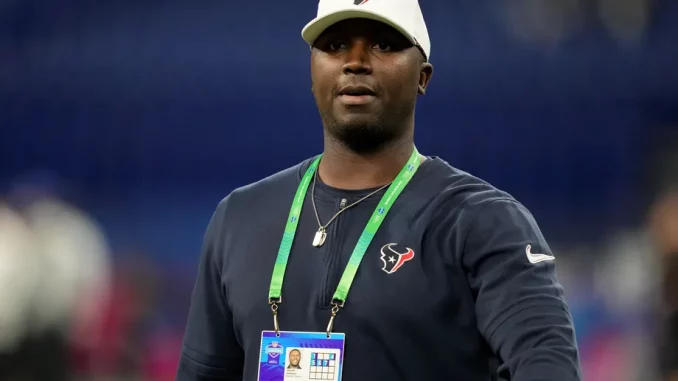
Criminal experts will tell you that eyewitness testimony is unreliable. Simply put, we remember what we want to remember and forget what we want to forget.
We began this journey by looking at Nick Caserio drafts as Houston Texans GM. That’s obviously a very narrow focus three years in. Smart analysis involves answering those nagging questions that come up when we offer the first round of analysis. In this case, it’s great to look at his three drafts, but how do those drafts stack up against the rest of franchise history?
We will go round by round again throughout the 20 year plus history of the franchise and rate players from one to four stars. One star players either didn’t make the team or made no impact. Two star players lasted a few years and were occasionally rotational players. Three star players were fairly solid starters or rotational players and four star players were elected to multiple Pro Bowls.
There is an obvious follow up question that comes on the heals of this analysis and that follow up question will be answered in part three. So, don’t think I’m ducking the obvious question. I’m simply pacing myself
Round by Round
First Round: Nine four-star players, seven three-star players, five two-star players, one one-star player
Second Round: One four-star player, eight three-star players, six two-star players, five one-star players
Third Round: One four-star player, seven three-star players, eight two-star players, 13 one-star players
Fourth Round: Two four-star players, three three-star players, 10 two-star players, nine one-star players
Fifth Round: Zero four-star players, two three-star players, six two-star players, 13 one-star players
Sixth Round: Zero four-star players, three three-star players, five two-star players, 22 one-star players
Seventh Round: Zero four-star players, one three-star player, four two-star players, 17 one-star players
I used a star system because I want to avoid the use of the term bust. That’s obviously a pejorative term that happens to be imprecise. Can we call any seventh round pick a bust? We also have to remember the limitations of our analysis. We have very little frame of reference here because we are only looking at Texans drafts. There is an obvious open question that will be addressed next time.
All that being said, we can begin to look at the relative value to the Texans of each of these rounds. We can also measure that against our own flawed perceptions of the Texans draft history. There has been a common conception that the Texans suck in rounds two and three but have been solid in the other rounds. This may or may not be true based on the findings. However, we do need to pay off on the aggregate points for each round.
Round One: 3.09 out of 4.00
Round Two: 2.25 out of 4.00
Round Three: 1.83 out of 4,00
Round Four: 1.92 out of 4.00
Round Five: 1.48 out of 4,00
Round Six: 1.40 out of 4.00
Round Seven: 1.27 out of 4,00
Probably the most fun thing for any analyst is when your data actually does back up your hypothesis. The Texans have been relatively weak in the third round historically even when compared with only themselves. There is no reason to perform better in the fourth round than the third round.
There was a period during the O’Brien era when five out of six third rounds were one star performers. A couple never actually officially suited up for the Texans for a variety of reasons. Recent drafts have obviously turned out differently and provide some hope that maybe their third round doldrums could be coming to an end.
Why does this matter?
It’s really very simple. The NFL has a famous point system that some pundits throw around as to what each selection is worth. It’s important that we understand where this system comes from and it comes from analysis like this. There are more intricate numbers we could use if we wanted to a comprehensive analysis, but for our purposes the four star system will work fine.
Simply put, each team has to value these selections differently. The Texans obviously have had more fourth round success relative to the other rounds historically. Maybe there is something to that league wide or maybe the Texans just have a history there. Either way, it behooves a team to maneuver. to spots in the draft where they have experienced success. Past results are never a full proof predictor of future performance
The nagging question we leave behind is how this compares with the rest of the league. We will cover that next time. A part of the uneasy feeling fans feel is seeing so few legitimate stars drafted after the first round. I counted four in over 20 years. Is that normal? We will have to wait until next time to answer that question.
Leave a Reply